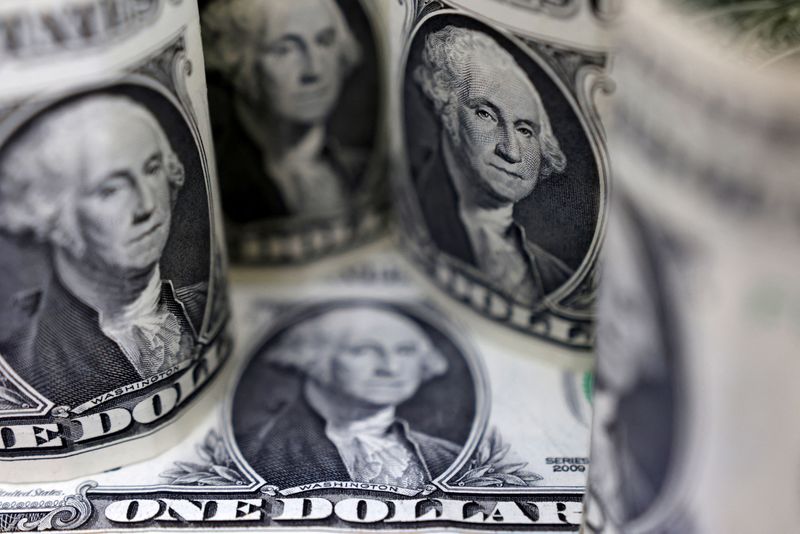Investing.com -- The US dollar is expected to face increasing downward pressure in the coming months, despite a recent boost from stronger-than-anticipated economic data.
As per analysts at UBS, the outlook for the greenback remains bearish, driven by a combination of narrowing interest rate differentials, concerns about the growing US fiscal deficit, and shifting global monetary policies.
In light of these factors, UBS has downgraded the US dollar to “Least Preferred” in its global strategy, favoring currencies like the euro, British pound, and Australian dollar instead.
Thursday saw the US dollar gain some ground after the release of revised second-quarter GDP growth figures.
“Meanwhile, second-quarter GDP was revised upward to a 3.0% annualized growth rate from the previously reported 2.8%, driven mainly by stronger consumer spending,” the analysts said.
This revision was largely driven by stronger consumer spending, which also saw an upward adjustment to a 2.9% annualized rate from the initial 2.3%.
This positive data helped the US dollar recover slightly, but it remains under pressure. The US dollar index has fallen by 3% over the past month and continues to hover near the lower end of its range since early 2023.
Despite this temporary reprieve, UBS analysts maintain that the broader outlook for the dollar is negative, with several factors likely to push it lower in the coming months.
One of the key factors expected to weigh on the US dollar is the anticipated narrowing of interest rate differentials.
The US Federal Reserve is likely to continue cutting interest rates, with UBS projecting a total reduction of 100 basis points across the Fed’s three remaining meetings in 2024.
While other central banks, including the Swiss National Bank, the Bank of England, and the European Central Bank, are also expected to reduce rates, their approach is likely to be more measured.
This slower pace of cuts abroad could make the dollar less attractive compared to other currencies.
In addition to the interest rate outlook, concerns over the US fiscal deficit are expected to further erode confidence in the dollar. The Congressional Budget Office has projected that interest costs on US debt will surpass defense spending this year, highlighting the growing fiscal challenges facing the country.
As the US presidential race intensifies, with Vice President Kamala Harris currently leading in the polls, the fiscal deficit is likely to become a focal point of debate, potentially creating additional headwinds for the dollar.
Global monetary policy shifts also pose a challenge for the US dollar. For example, the Reserve Bank of Australia is expected to maintain its current policy stance until next year, which could add pressure on the dollar.
In contrast, the Swiss franc is expected to remain strong due to its safe-haven status and the Swiss National Bank’s anticipated conclusion of its easing cycle in September.
UBS forecasts that the euro, British pound, and Australian dollar will all strengthen against the US dollar by June 2025, with EURUSD at 1.16, GBPUSD at 1.38, and AUDUSD at 0.70.
The anticipated weakening of the US dollar has significant implications for global markets. As the dollar depreciates, risk assets such as quality stocks are likely to become more attractive, particularly in an environment where the Federal Reserve is cutting rates.
UBS suggests that investors consider reallocating cash into high-quality bonds, especially those from investment-grade companies, to take advantage of the changing economic landscape.
Despite some signs of weakness in the US labor market, such as an uptick in unemployment in July, the overall picture remains resilient. Weekly jobless claims have declined, and consumer spending continues to show strength, alleviating fears of an immediate recession.
UBS maintains its base case for a soft landing for the US economy, supported by the expected rate cuts from the Fed.
